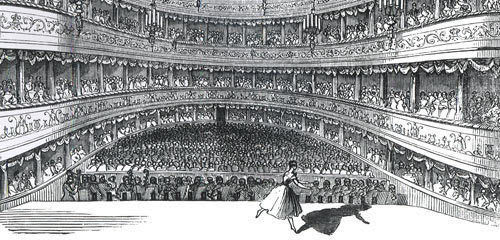Results of a three-year study
What have they both learnt during their three years on the project?
Yeandle has been surprised at “the flexibility of scripts” and explains that traditional fairy stories were often merged during the period to create new titles such as Robin Hood and the Babes in the Wood.
He has also been surprised at the diversity of topical references. “Some of the issues which the playwright knew to be important to the audience were quite unexpected,” he tells me, before revealing that “trends in the fashion of well-heeled ladies [...], water rate hikes in Whitechapel and the onset of refrigerated container ships,” each made an appearance in the scripts he read.
Richards’s research has also unearthed some gems, such as, “the completely forgotten Oscar Barrett,” who, “essentially fought a decade’s long pantomime duel with Sir Augustus Harris,” manager of Drury Lane and often referred to as the Father of Modern Pantomime.
As Richard explains, “As Harris was producing more and more spectacular pantomimes, stuffed full of music hall stars, and outraging purists, Barrett was producing each year traditional pantomimes, more akin to fairy plays than the Harris version.” The competition between celebrity, story and spectacle, not forgetting talent and tradition, goes back much further than many would believe. But what of the project’s legacy?
After three years of archival research, 2013 will see Richards’s The Golden Age of Pantomime: Slapstick, Spectacle and Subversion in Victorian England published alongside a volume by Principal Investigator Newey and an edited collection of conference papers. The project will also see the completion of two PhD theses from students Ellen Couchman Crook and Claire Robinson.
Richards hopes the project will, “stimulate further quality research on the pantomime,” noting that “there is enough material to write a pantomime history of theatres in every big city,” and that pantomime writers, such as Nelson Lee, Frank Green and the Brough Brother remain, “completely unstudied.”
With so much left to discover, the project will no doubt inspire current and future scholars to delve deep into the world of pantomime in order to learn more about this fascinating cultural institution.
